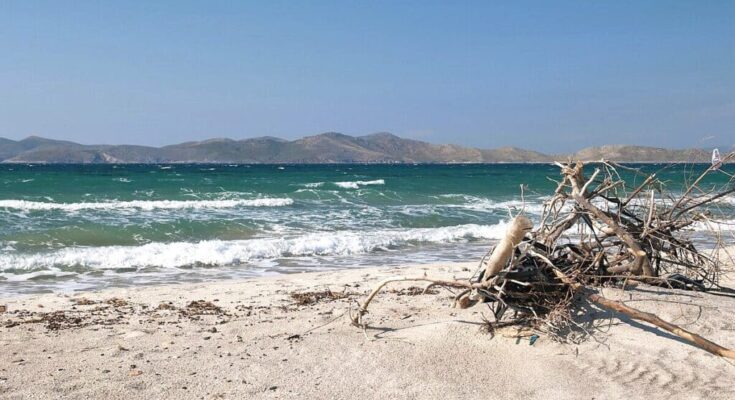Two beaches in Greece are on the list of the places that have the whitest sand in the world, a recent study found.
The research that was conducted recently by CV Villas has revealed some fascinating information about the world’s most pristine and white sand beaches.
It is common knowledge that Greece is home to some of the most spectacular beaches in Europe if not the entire world, so it comes as no surprise that two Greek beaches made notable appearances on the list.
This study was based on scientific color theory and therefore analyzed the RGB color codes of sands from a stunning 200 beaches from around the world. This was conducted in order to determine the sand’s proximity to the purest shade of white.
The beaches in Greece with the whitest sand
Marmari Beach, which is located on Greece’s island of Kos, has been ranked third globally for its exceptionally white sands.
The research of CV Villas found that the sand that can be found at Marmari Beach is only 6.5 points off from the purest white shade. This fascinating result makes it one of the top contenders not just in Europe but worldwide.
This stunningly beautiful beach, with its almost ethereal soft and white sands, is a great example of the quality of Greece’s Aegean destinations.
Another Greek gem, a bit further to the West, is the Agios Prokopios Beach on the island of Naxos in the Cyclades.
This beach also features prominently in the list of beaches with the whitest sand. It actually managed to secure a spot in the top thirty whitest sands worldwide.
Known for its long and beautiful stretch of fine and light sand along with the crystal-clear waters of the southern Aegean Sea, Agios Prokopios is a favorite among both locals and tourists who visit the island every year.
How was this study for the whitest sand conducted?
The methodology that the experts from CV Villas used involved a complicated process. They captured unedited Google map images of the selected beaches and then used a color dropper tool to identify the RGB code of the sand.
This was then compared with the RGB code of the purest white using the colormine.org calculator to determine the closeness of the sand of every beach to the whitest white.
Which beaches came first?
Europe dominated the top of the list with fifteen out of the top thirty beaches located on a European shore. This number includes not only Greece’s two beaches of Marmari and Agios Prokopios but also other European destinations like Tropea Beach in Italy and Platja de Muro in Spain, both of which share the fourth position.
The first place was taken by the Tulum beach in Mexico and the second place was secured by the Anse Source d’Argent beach in the Seychelles.



